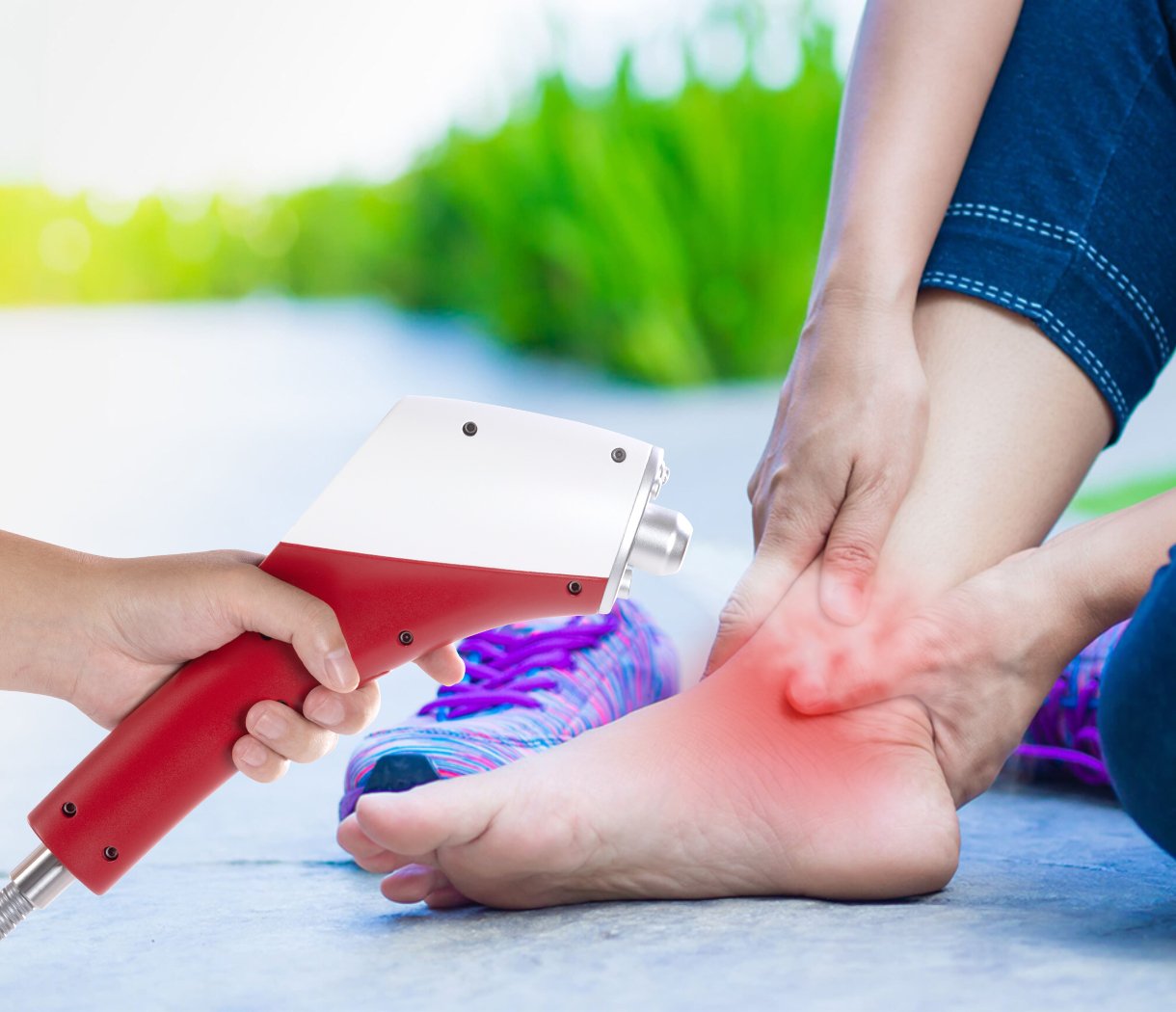The Agony of Ankle Sprains: The Common Setback
Ankle sprains are common injuries. They affect people of all ages and activity levels. Whether you’re an athlete, a weekend warrior, or just navigating daily life, twisting your ankle can stop you in your tracks. The pain and swelling make even simple tasks feel impossible. What’s worse, these injuries often take longer to heal than expected. The typical symptoms are well-known: pain, swelling, bruising, and limited mobility. However, what’s even more frustrating is that traditional treatments may not speed up recovery. So, is there a faster, more effective solution? Enter CO2 cryotherapy—a breakthrough in ankle sprains recovery that can help you heal faster and get back on your feet sooner.
Why Traditional Treatments Fall Short
For decades, rest, ice, compression, and elevation (R.I.C.E.) have been the standard treatments for sprained ankles. These methods work to a degree, but they often fall short when it comes to reducing recovery time and alleviating pain. Ice may numb the pain temporarily, but it doesn’t address the root causes of swelling and tissue damage. Painkillers can mask symptoms but won’t speed up the healing process. Long rest periods can make the recovery feel like a drawn-out affair.
What’s often needed is a treatment that can tackle the inflammation at its core and promote faster tissue repair—something that traditional methods alone can’t provide. That’s where CO2 cryotherapy comes into play.
What Is CO2 Cryotherapy?
CO2 cryotherapy is a cutting-edge treatment that uses compressed carbon dioxide to create a therapeutic cold environment. Unlike traditional ice packs, which can only cool the skin’s surface, CO2 cryotherapy uses deeper penetration to reduce inflammation and promote healing at a cellular level. This non-invasive, painless therapy is often used by athletes and active individuals to heal injuries quickly and efficiently.
The CO2 gas is delivered in controlled bursts, targeting the injured area with an intense cold stimulus. This process not only numbs pain but also reduces swelling and enhances blood flow, both of which are crucial for accelerating recovery. By promoting better circulation, CO2 cryotherapy helps deliver oxygen and nutrients to the affected tissues, aiding in quicker healing.
Healing in the Fast Lane: The Advantages of CO2 Cryotherapy
The benefits of CO2 cryotherapy extend beyond mere pain relief. It works by stimulating the body’s natural healing processes, offering advantages that traditional methods just can’t match. By cooling the injured area, CO2 cryotherapy reduces inflammation, which is a major contributor to swelling and discomfort. This reduction in inflammation can lead to faster healing times and a quicker return to your normal routine.
Furthermore, CO2 cryotherapy promotes better blood flow, which is essential for repairing damaged tissues. As the cold stimulates blood vessels, it causes them to constrict and then dilate once the therapy session is over. This process helps flush out toxins and delivers fresh oxygenated blood to the injury site, speeding up tissue repair and recovery.
CO2 cryotherapy also reduces pain by targeting the nerve endings in the injured area. The cold stimulus blocks pain signals from reaching the brain, providing immediate relief and allowing you to move without as much discomfort.
Getting Back on Your Feet: Is CO2 Cryotherapy the Missing Piece?
If you’re dealing with an ankle sprains, CO2 cryotherapy could be the key to getting back on your feet faster. While traditional methods like R.I.C.E. are helpful, they often don’t provide the accelerated healing you need. CO2 cryotherapy addresses the root causes of swelling and pain, helping to restore movement and strength quickly.
For athletes, active individuals, or anyone who needs to return to their routine as soon as possible, CO2 cryotherapy is a game-changer. It offers a non-invasive, highly effective way to speed up recovery, alleviate pain, and get you back to doing what you love—pain-free.
Consider adding CO2 cryotherapy to your injury recovery plan and experience the difference it can make. Talk to your healthcare provider to see how it can complement your treatment and help you bounce back from an ankle sprain faster than ever before.



